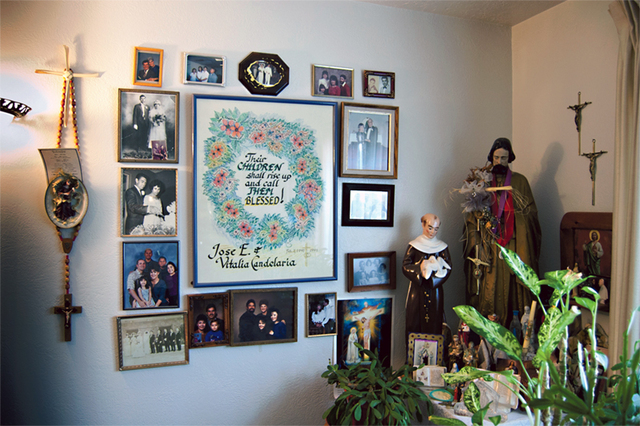News Feature: Hermanas De Los Duranes
Remembrances From The North Valley


Vita Candelaria (left, with her sister Dora Perea) says daily chores and routines have changed since their childhood in los Duranes. “When we washed laundry, we had to heat up water in a big tub outside. We used to have the lavador —the washboard—and my mother used to make her own soap.”
Margaret Wright

Family keepsakes form the centerpiece of Vita Candelaria’s living room.
Margaret Wright




